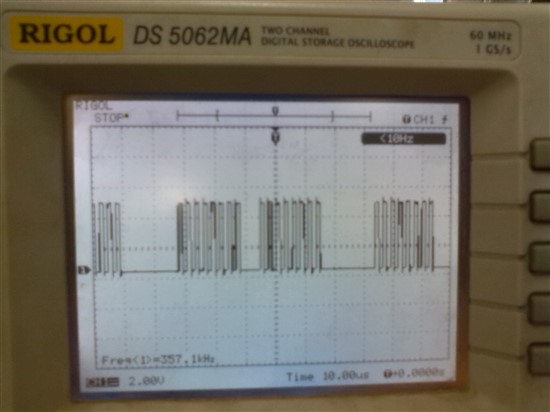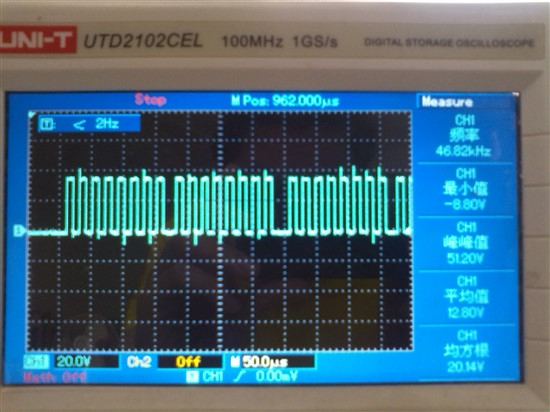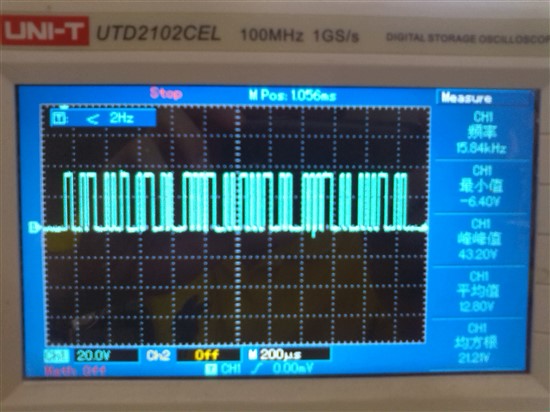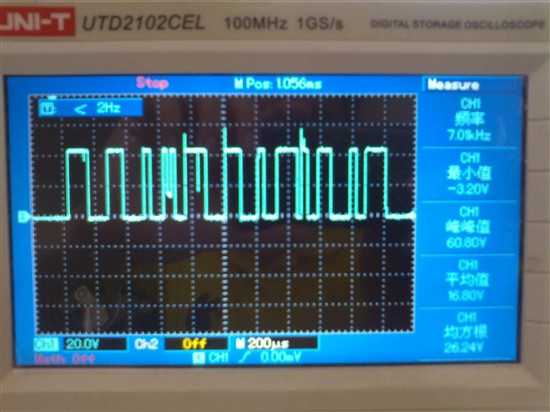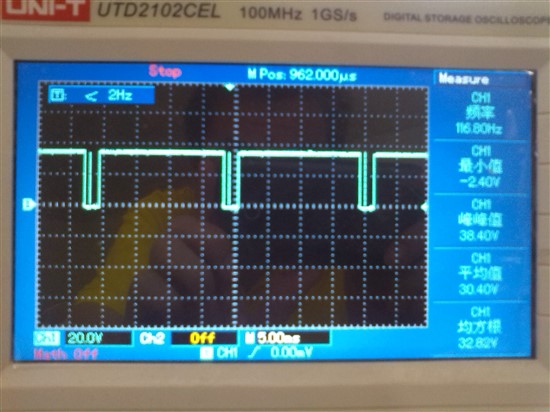亲们~大家好,我最近在使用一款模数转换芯片ADS1118,现在遇到以下问题,希望可以得到大家的帮助,小弟感激不尽~~
1.ADS1118和单片机(我用的是MSP430F149)通信要使用SPI通信协议,但我现在不清楚如何读取模数转换之后的数字量,比如说怎么使用SPI中断读取数据?仅仅只用在中断函数体中写 “Data = U0RXBUF” 吗??
2.单片机执行程序之后与ADS1118进行通信之后,我在SCLK引脚上检测到了时钟信号,与TI提供的说明书上的波形基本一样,(波形图如下)不知道正不正确,请大家帮忙看看~~
3.但检测 ADS1118 的 DOUT 引脚时却出现这样的波形,不论有没有模拟量输入都是的波形,如下图,这我就费解了...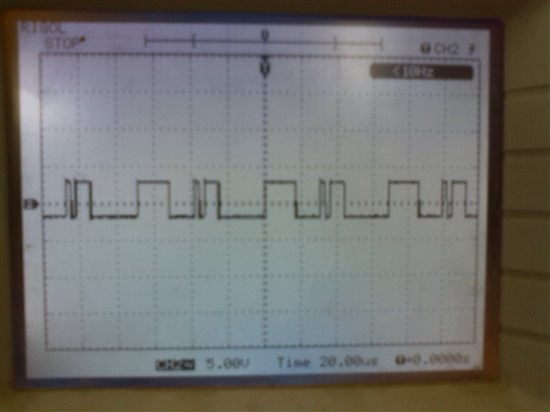
最后我的硬件连接图如下: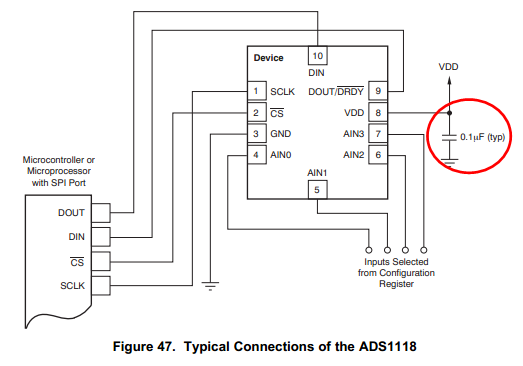 我将AIN0接正电压,AIN1接地这个连接方式有错误吗?
我将AIN0接正电压,AIN1接地这个连接方式有错误吗?
程序如下(我用的是默认配置,没有修改):(我使用的是IAR Embedded Workbench进行编程的)
#include <msp430x14x.h>
#define CPU_F ((double)8000000)
#define delay_us(x) __delay_cycles((long)(CPU_F*(double)x/1000000.0))
#define delay_ms(x) __delay_cycles((long)(CPU_F*(double)x/1000.0))
#define uchar unsigned char
#define uint unsigned int
#define CS_L P2OUT = 0X00
#define CS_H P2OUT = 0Xff
#define LED_ON P1OUT = 0xff
#define LED_OFF P1OUT = 0x00
char cmd[] = {0x05,0xeb,0x00,0x00},SLV_Data = 0xFF;
uint a = 0,U0TX_BYTE=1;
void SPI_WRITE()
{
uint i;
CS_L;
//while(!U0TX_BYTE);
for(i=0;i<4;i++)
{
TXBUF0 = cmd[i]; // Transmit first character
//while(!U0TX_BYTE);
//U0TX_BYTE = 0;
}
CS_H;
}
int main(void)
{
unsigned int i;
WDTCTL = WDTPW + WDTHOLD; // Stop WDT
P1OUT = 0x000; // Setup P1.0 for LED output
P1DIR |= 0x0ff;
P2DIR |= 0X0FF;
P3SEL = 0x00E; // Setup P3 for SPI mode
P3OUT = 0x020; // Setup P3.4 for Scope trigger and
P3DIR |= 0x030; // P3.5 for slave initialization
U0CTL = CHAR + SYNC + MM + SWRST; // 8-bit, SPI, Master
U0TCTL = SSEL1 + STC; // SMCLK, 3-wire
U0BR0 = 0x002; // *** = SMCLK/2
U0BR1 = 0x000;
U0MCTL = 0x000;
ME1 = USPIE0; // Module enable
U0CTL &= ~SWRST; // SPI enable
IE1 |= URXIE0; // Recieve interrupt enable
_EINT(); // Enable interrupts
P3OUT &= ~0x020; // Toggle P3.5: slave reset
P3OUT |= 0x020;
i = 50000; // Delay
do (i--);
while (i != 0);
CS_L;
while (1)
{
CS_L;
//SPI_WRITE(); // Transmit first character
while ((IFG1 & UTXIFG0) == 0);
TXBUF0 = 0x05; //给ADS1118发送数据
TXBUF0 = 0x8B;
TXBUF0 = 0x00;
TXBUF0 = 0x00;
CS_H;
LPM0; // CPU off
//while(1);
}
} // End Main
#pragma vector = USART0RX_VECTOR
__interrupt void SPI0_rx (void)
{
CS_L;
P1OUT = U0RXBUF;
//P3OUT ^= 0x010; // XOR P3.4 for scope trigger
while ((IFG1 & UTXIFG0) == 0); // USART0 TX buffer ready?
//P1OUT = 0XFF;
TXBUF0 = 0x05;
TXBUF0 = 0xeb;
TXBUF0 = 0x00;
TXBUF0 = 0x00;
CS_H;
}
恳请大家提供帮助与建议,不胜感激,跪谢Orz

